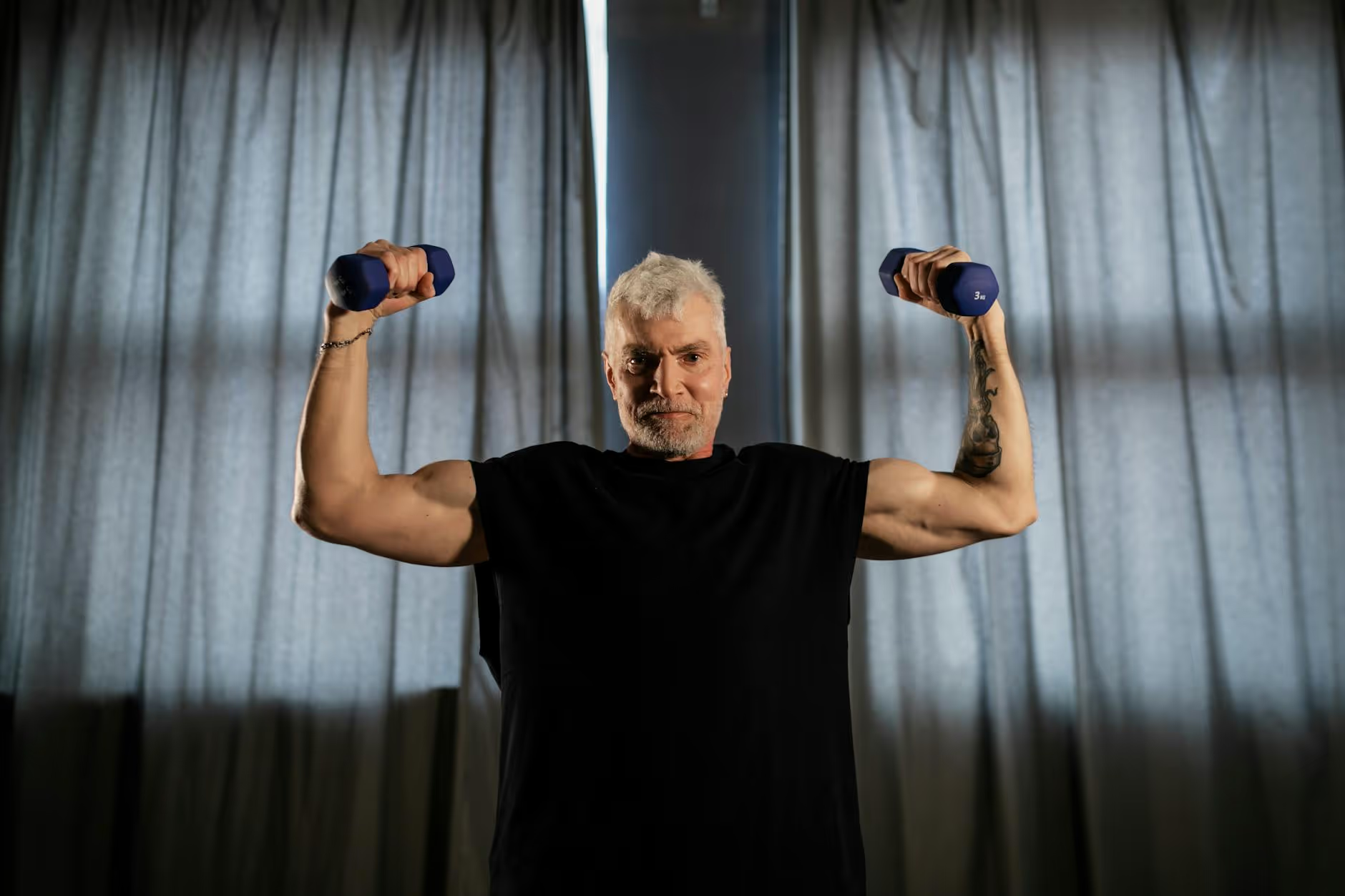The Importance of Balance and Fall Prevention Therapy for Seniors
March 14, 2025
Understanding and Mitigating Fall Risks Among Seniors


Introduction
As we age, maintaining balance and preventing falls becomes an increasingly significant concern. Falls are the leading cause of injuries among people aged 65 and older, and understanding how to mitigate these risks is crucial for enhancing the quality of life for seniors. This article explores the importance of balance and fall prevention therapy, offers insight into the science behind balance, and provides practical strategies for seniors and their caregivers.
The Unseen Challenge: Risks and Consequences of Falls in Seniors

Statistics on Fall Incidence Among Seniors
Falls are alarmingly common, with about one in four older adults aged 65 and above experiencing a fall each year in the United States. This results in over 36 million falls annually, highlighting a critical public health concern. Additionally, it is reported that 20% to 30% of those who fall suffer moderate to severe injuries, leading to long-term complications and increased reliance on emergency services. In fact, these falls account for roughly 3 million emergency department visits, with over 300,000 hospitalizations due to hip fractures alone.
Impact of Falls on Senior Health
The impact of falls extends far beyond physical injury. Falls can lead to loss of independence, reduced mobility, and a decline in overall quality of life. Serious injuries like fractures and traumatic brain injuries not only threaten physical health but can also precipitate mental health challenges, such as depression and fear of falling again. Furthermore, seniors who have experienced one fall are two to three times more likely to fall again. This cyclical risk emphasizes the importance of effective fall prevention strategies to ensure seniors maintain their autonomy and well-being.
Why is Fall Prevention Important for Seniors?
Fall prevention is crucial for seniors because falls are a leading cause of serious injuries, including fractures and hospitalizations, affecting over one in four older adults each year. The risk of falling increases with age and is influenced by factors such as diminished eyesight, balance issues, and certain medical conditions. Additionally, environmental hazards at home, like poor lighting and uneven surfaces, significantly contribute to fall risks. Engaging in regular exercise that emphasizes strength and balance can help mitigate these risks, as can making necessary home safety adjustments. Ultimately, preventing falls not only preserves physical health but also enhances overall quality of life for seniors.
The Role of Balance Exercises in Senior Health
Why are balance exercises important for seniors?
Balance exercises are crucial for seniors as they help improve stability and strength, significantly reducing the risk of falls. With more than 25% of adults aged 65 and older experiencing falls each year, these exercises are essential in preventing injuries such as fractures and traumatic brain injuries.
Several factors contribute to falls, including balance problems, poor vision, and certain medications that can cause dizziness. Regular engagement in balance and strength training activities not only enhances physical health but also promotes confidence in mobility.
Incorporating exercises like the sit-to-stand can help build leg strength and improve body mechanics. It is equally important for seniors to pair these exercises with home safety measures like improving lighting and removing clutter to ensure a safer living environment.
Consulting with healthcare professionals before starting any exercise program is advisable. This step allows individuals to address personal risks and existing health conditions, tailoring a safe approach to fall prevention.
Specific balance exercises for seniors
Here are some recommended balance exercises for seniors that can be done safely at home:
| Exercise Type | Description | Benefits |
|---|---|---|
| Sit-to-Stand | Transition from sitting to standing | Builds leg strength and improves mechanics |
| Single-leg Standing | Balancing on one foot | Enhances stability and focus |
| Heel-to-Toe Walk | Walking in a straight line on heels | Improves coordination and balance |
| Back Leg Raises | Raising leg backwards while standing | Strengthens glutes and improves posture |
| Seated Leg Raises | Lifting legs while seated | Builds core strength and stability |
| Toe Stands | Rising onto toes | Strengthens calf muscles and enhances balance |
| Side Leg Raises | Lifting leg to the side while standing | Strengthens hip muscles and improves balance |
Performing these exercises consistently, at least three times a week, can substantially reduce the risk of falls, promoting better overall health and independence for seniors.
How Balance Training Reduces Fall Risks

How can balance training reduce the risk of falls in older adults?
Balance training is effective in reducing the risk of falls among older adults by enhancing essential physical skills such as muscle strength, flexibility, and coordination. As individuals age, they naturally experience a decline in these abilities, increasing the likelihood of falls. Through targeted exercises tailored to address these issues, seniors can significantly improve their stability.
Research supports the effectiveness of balance training, showing that exercise interventions can decrease fall rates by up to 24%. Notably, Tai Chi has been particularly effective, with studies reporting a reduction in falls by approximately 20%. Regular participation in resistance and balance training sessions multiple times a week yields the most significant benefits, fostering improvements in overall strength and stability.
Incorporating balance exercises not only enhances physical health but also promotes mental well-being. Engaging in such activities encourages older adults to remain active and independent, creating a holistic strategy for fall prevention. By committing to regular exercise, seniors gain the skills necessary to navigate their environment confidently and safely, thus reducing the risk of potential injuries.
Research findings on effectiveness of balance training
The effectiveness of balance training in seniors is well-documented through various studies. For instance, a meta-analysis indicated that exercise programs incorporating balance training resulted in a 23% reduction in fall incidents among older adults. Moreover, systematic reviews reveal that participation in structured balance and strength programs improves older adults' coordination and muscle strength, particularly in the core and legs, which are critical areas for maintaining balance.
Other interventions, such as engaging in community-based programs like ‘A Matter of Balance’ or exercise classes specifically designed for seniors, also highlight successful outcomes. These initiatives focus on reducing fear of falls and enhancing physical activity levels, ultimately contributing to a safer and more active lifestyle for the elderly.
| Exercise Type | Impact on Balance | Notes |
|---|---|---|
| Balance Training | 23% reduction in falls | Enhances coordination and stability |
| Tai Chi | 20% reduction in falls | Improves flexibility and calmness |
| Resistance Training | Increases muscle strength critical for stability | Key for enhancing balance and mobility |
| Community Programs | Reduce fear of falling and increase activity levels | Encourages social engagement and support |
Exploring Evidence-Based Fall Prevention Programs
What are evidence-based fall prevention programs and why are they significant?
Evidence-based fall prevention programs (EBFPPs) are specifically designed interventions aimed at reducing fall risks among older adults. These programs focus on enhancing physical activity, balance, and strength training, which are vital for preventing falls. Examples of such programs include:
- A Matter of Balance: This program helps participants manage their fear of falling while encouraging increased activity levels through structured exercises.
- Bingocize®: Combines exercise with the fun of bingo, promoting physical fitness and social interaction among seniors.
- Otago Exercise Program: Focuses on strength and balance exercises tailored for older individuals to promote independence.
These programs are significant because they not only improve participants’ physical abilities but also foster mental well-being by reducing fear of falling. Moreover, they present a cost-effective solution to a pressing public health issue, particularly given that falls are a leading cause of injury-related deaths in the older population.
What are the benefits and effectiveness of fall prevention programs?
EBFPPs have shown considerable effectiveness, reporting significant outcomes, such as:
- Reduction in fall incidence: Many programs have resulted in a decrease in fall rates by up to 30%.
- Improved strength and mobility: Participants commonly experience enhanced muscle strength, balance, and coordination, which contribute to fall prevention.
- Quality of life enhancements: Through increased physical activity and improved confidence, older adults often see a boost in their overall quality of life.
Research supports these positive outcomes, indicating that structured exercise regimens can lead to a considerable reduction in fall risk, effectively promoting healthier aging. By not only addressing the physical aspects of fall prevention but also the psychosocial elements, EBFPPs play a crucial role in maintaining the independence and well-being of older adults.
Types of Exercises to Improve Balance
What types of exercises are available for improving balance in seniors?
There are several types of exercises that seniors can utilize to enhance their balance and reduce the risk of falls. These include a mix of standing and strength-training exercises. Here are some effective options:
- Single-leg Stance: Stand on one leg for as long as possible. This improves stability and balance.
- Heel-to-Toe Walk: Walk in a straight line by placing the heel of one foot directly in front of the toes of the other foot.
- Standing with Feet Apart or Together: Maintaining balance in different stances helps challenge stability.
Strength training exercises can also enhance balance. Recommended exercises include:
- Sit-to-Stand: Transitioning from sitting to standing helps strengthen legs and core.
- Heel Raises: Stand and lift your heels off the ground to strengthen calves.
- Leg Raises: Raise your legs to the side or back to improve overall leg strength.
Additionally, engaging in activities like Tai Chi promotes balance, strength, and stability. It’s a gentle form of exercise that emphasizes slow, controlled movements.
However, it’s essential for seniors to consult with a doctor or physical therapist prior to starting any new exercise program, particularly if they have existing balance issues. Their guidance can ensure that chosen exercises align safely with their individual health needs and capabilities.
Practical Fall Prevention Tips for Seniors and Caregivers

What are practical fall prevention strategies for seniors and caregivers?
Creating a safer home environment is essential for fall prevention among seniors. Begin by removing clutter from walkways and common areas. Improving lighting, especially in stairwells and hallways, ensures better visibility and reduces tripping hazards. Installing grab bars in bathrooms and non-slip mats can further enhance safety.
Engaging in regular exercise is another crucial aspect of fall prevention. Activities like tai chi, yoga, or strength training improve balance and enhance stability, making falls less likely. Physical therapists can guide seniors through tailored exercise programs that target specific weaknesses.
Caregivers play a vital role in maintaining a safe environment. They should routinely evaluate the home for potential hazards and educate themselves on the common risks elderly individuals face, such as medication side effects and vision changes. Additionally, routine medical assessments help in identifying health factors that could increase fall risk.
Finally, a personalized care plan that includes emotional support can empower seniors, helping them maintain the confidence and independence needed for daily activities.
| Home Modification Tips | Exercise Recommendations | Safety Assessment Strategies |
|---|---|---|
| Remove clutter | Engage in tai chi | Conduct regular home safety checks |
| Improve lighting | Participate in yoga sessions | Educate on fall risks |
| Install grab bars | Strength training exercises | Schedule routine medical evaluations |
| Use non-slip mats | Balance training with therapists | Develop a personalized care plan |
Implementing these strategies can significantly reduce the risk of falls and enhance the quality of life for older adults.
Understanding and Addressing Balance Disorders in Seniors

Components of Balance Systems
Maintaining balance is crucial for seniors, allowing them to navigate their environment confidently. Balance relies on three key systems:
- Somatosensory System: This system uses input from the body's position and movement, providing essential information about where we are in space.
- Vestibular System: Located in the inner ear, this system detects motion and helps maintain our sense of balance.
- Visual System: Our eyesight plays a vital role in balance, as visual cues help us judge distances and navigate obstacles.
Disruptions in one of these systems can significantly increase fall risks, making awareness and assessment essential.
Contributions of Health Conditions to Balance Issues
Several health conditions exacerbate balance disorders in older adults, including:
- Muscle Weakness and Sarcopenia: Decreasing muscle mass and strength can lead to reduced stability.
- Joint Stiffness: Issues like arthritis limit mobility and coordination.
- Medication Side Effects: Some medications can induce dizziness or drowsiness, impacting balance.
- Vision Impairments: Age-related changes in vision can impair spatial judgment.
Addressing these factors through targeted therapies and interventions is critical for fall prevention in the aging population.
Conclusion
Balancing the complex factors contributing to falls in seniors requires a multifaceted approach involving exercise, environmental adjustments, and awareness. Physical therapists and caregivers play a pivotal role in crafting personalized programs to reduce risks, all while empowering seniors to maintain their independence. By integrating these strategies into daily routines, older adults can significantly decrease their likelihood of falls, enhancing both their safety and quality of life. Raising awareness and prioritizing fall prevention will ensure that seniors can navigate their later years with confidence and dignity.
References
- Balance and Fall Prevention for Seniors
- Fall Prevention: Balance and Strength Exercises for Older Adults
- Physical activity programs for balance and fall prevention in elderly
- The Importance of Balance Training for Fall Prevention: Insights from ...
- Falls and Fall Prevention in Older Adults - StatPearls - NCBI Bookshelf
- Fall Prevention: How Physical Therapy Can Keep You Balanced ...
- Fall Prevention Month: Improving Balance for Seniors














































































































.jpeg)










































































































































































































.avif)























































.jpeg)

































































.jpeg)














.jpg)









































.jpeg)









































































.avif)




.avif)





































.avif)






















































































































































































